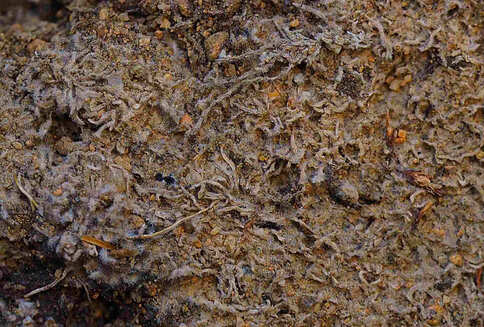To paraphrase Tom Gleeson, this year I am really into roots.
For years I noticed that Kickbush (Styphelia acervata, previously named Astroloma pallidum) often had dead or stressed patches, in its otherwise healthy neat little clump.
Recently I read about rootstock splitting in Astrolomas in the thrilling (for me) book “Unravelling the Secret Lives of Plant Root Systems”
A rootstock splitting plant has a bundle of individual cylinders each with a bark coating that connect from a lateral (side) root to a side branch. A bit like the insulated wires in an electric cable. If the soil on one side of the plant is particularly dry, only the branch fed by roots from that side are affected
- Rootstock splitting root system
- Both a deep tap root and shallow woody lateral roots
- A unique ericoid mycorrhiza consisting of long root hairs growing out of the woody roots, which become infected by fungi that greatly increases the plant’s access to water and nutrients.
- Tough and spiny leaves, which often become yellow and dormant in summer
- Prostrate stems that spread along the ground and send up vertical twigs to form a mat that traps soil and leaves. This reduces the surface soil temperature and help the plant retain moisture.
 Developing Kickbush berry
Developing Kickbush berry - Tubular flowers that are pollinated by native bees (that can fly further than European honeybees) using buzz pollination.
- Seed are drupes (berries) that are eaten by birds and animals and spread in their dung. They are bush tucker and the kickbush name comes from early settlers kicking the prostrate bushes over to look for ripe berries underneath (Noongars use a stick to pick through the leaves).
Interesting little plants
A section through the top of one shows why they are called ‘mound plants’
The image below showing a side view of the washed kickbush shows the relatively small taproot with large lateral roots radiating out just below the surface. The laterals would have sent out smaller roots to explore for gaps in the dense or gravelly subsoils and produce the long root hairs that were colonised by fungi in the growing season.
Above the soil surface main stems radiating out in a circle produced upward facing foliage that trapped debris. Washing the plant was no mean feat as one side of the kickbush had been colonised by densely packed cluster roots from the small sedge (or rush)
The thin ‘root’ projecting below the root on the left is a sedge rhizome (underground stem) that ran below the soil surface to shoots and the root mass in the Kickbush
 Sand binding root mass
Sand binding root mass Cluster roots are encouraged to form where there are sources of 'bound' phosphorus as in leaf litter and accumulated dust as in the left handed side of the kickbush.









